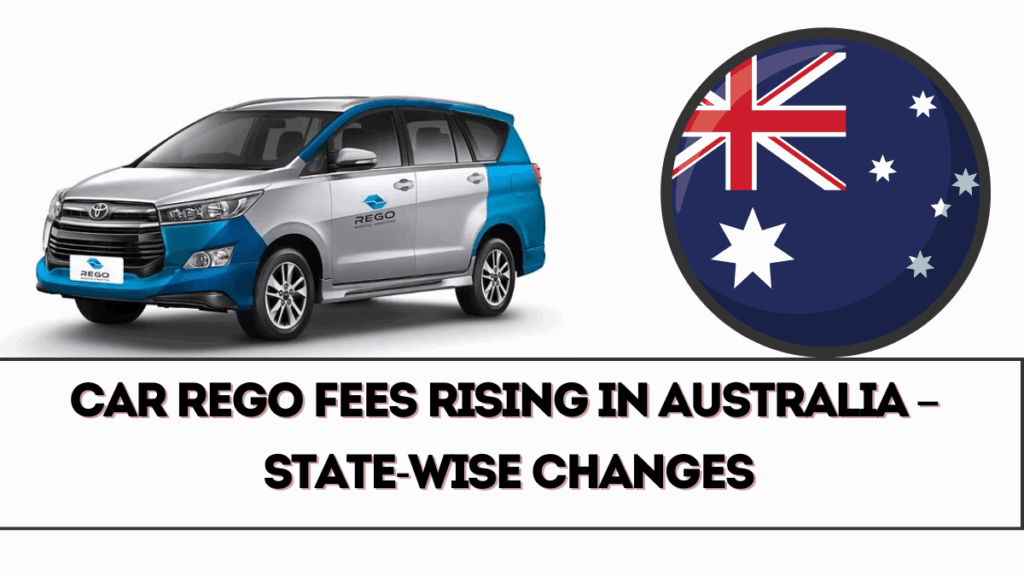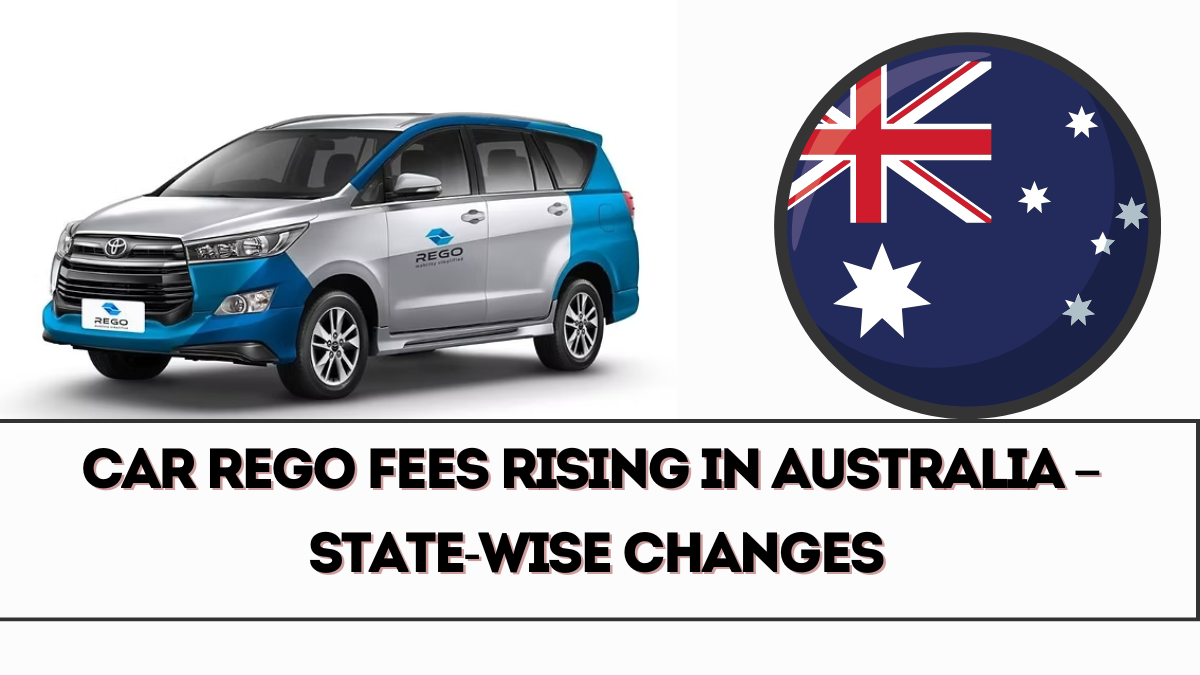Car owners in Australia are preparing for a significant shift in vehicle registration costs as multiple states announce updates effective from September 2025. The rego fee increase comes as part of broader government initiatives to fund road maintenance, improve infrastructure, and manage the rising costs of transportation services. While some see the increase as necessary for better facilities, many households worry about the impact on their monthly budgets.
Here’s a detailed look at how these changes are set to affect drivers across Australia, with a focus on Victoria (VIC), New South Wales (NSW), Queensland (QLD), and other states implementing updates this September.

Why Are Car Rego Fees Increasing in 2025?
The primary reason for the rego fee hike is the rising cost of road construction, public transport subsidies, and vehicle safety programs. Governments have stressed that more vehicles on the road mean greater wear and tear, requiring higher funding for maintenance.
Additionally, Australia’s shift towards electric vehicles (EVs) and hybrid cars has slightly reduced revenue from fuel excise, prompting states to adjust registration charges as an alternative source of income. Officials argue the increase ensures fairness, as all vehicle types contribute to infrastructure upkeep.
State-Wise Car Rego Fee Updates from September 2025
Victoria (VIC)
-
VIC has confirmed an increase of approximately $25–$40 per year, depending on vehicle type and weight.
-
Small passenger cars will see the lowest rise, while heavy vehicles will face higher costs.
-
The additional revenue will be allocated to upgrading rural highways and city toll bypasses.
New South Wales (NSW)
-
NSW rego fees will rise by an average of 3.5% starting in September.
-
Motorcycles will experience a smaller increase compared to private cars.
-
The state government announced that funds will support road safety technology, including new speed detection systems.
Queensland (QLD)
-
QLD is implementing a flat $30 increase for all private vehicles.
-
The rise comes alongside new investments in public transport and EV charging networks.
-
Discounts will remain for pensioners and low-income households to soften the impact.
Western Australia (WA) and South Australia (SA)
-
Both states are expected to raise rego fees by a smaller margin of $15–$20.
-
Revenue will go toward coastal highway maintenance and rural transport projects.
Tasmania and Northern Territory (NT)
-
These regions will see minimal increases, largely to align with national trends.
-
Local governments state that future rises will depend on infrastructure funding needs.
How Much More Will Drivers Pay in 2025?
The table below shows approximate increases for average passenger vehicles across key states:
State |
Current Avg. Annual Rego |
Increase (Sept 2025) |
New Total |
|---|---|---|---|
VIC |
$850 |
+$30 |
$880 |
NSW |
$920 |
+3.5% (~$32) |
$952 |
QLD |
$760 |
+$30 |
$790 |
WA |
$740 |
+$18 |
$758 |
SA |
$720 |
+$15 |
$735 |
While the differences may appear small, the cumulative effect across households with multiple vehicles could strain budgets.
Impact on Households and Businesses
For everyday families, especially those already managing high living costs, these changes add another expense. Businesses with large fleets, such as delivery services and logistics companies, may face significantly higher operational costs.
However, governments argue that improved roads, safer highways, and new technology will save money in the long run by reducing accidents and maintenance costs.
Rego Fee Concessions and Discounts
To balance the impact, many states are maintaining or even expanding concessions:
-
Pensioners and Seniors: Continued discounts in VIC, NSW, and QLD.
-
Low-Income Households: Payment plans and partial exemptions available.
-
Electric Vehicle Owners: Some states offer rebates despite the rego rise to encourage adoption.
These measures aim to ensure that vulnerable groups are not disproportionately affected by the September 2025 updates.
Long-Term Effects of Rego Fee Increases
Experts predict that rego fee increases will become a recurring adjustment in the coming years. As Australia transitions further towards clean energy vehicles, governments will rely on registration charges and toll systems for consistent revenue.
Some analysts suggest a possible nationwide reform of vehicle taxes by 2030, where a standard system could replace state-by-state variations. Until then, periodic hikes like the one in September 2025 will likely continue.
Preparing for the Change
Drivers can take several steps to manage the rising costs:
-
Check State Government Portals: Stay updated on exact rego amounts and due dates.
-
Consider Annual Payments: Some states offer small discounts for full-year upfront payments.
-
Explore EV Rebates: Check if switching to a hybrid or EV offers rebates that offset the fee rise.
-
Budget Planning: Factor in the increased rego while planning for fuel, insurance, and maintenance.
Awareness and early planning can reduce financial stress caused by the changes.
FAQs
When do the new rego fees take effect in Australia?
The increases will apply from September 2025, replacing earlier July timelines in several states.
Which state has the highest car rego fee in 2025?
NSW continues to have the highest average annual rego fees, now crossing $950 for passenger cars.
Are there discounts available after the increase?
Yes, concessions for pensioners, seniors, and low-income households remain in place across most states.
Why are EVs included in the rego fee hike?
Governments argue that all vehicles, regardless of fuel type, contribute to road wear and require equal responsibility in funding infrastructure.
Click here to know more.
